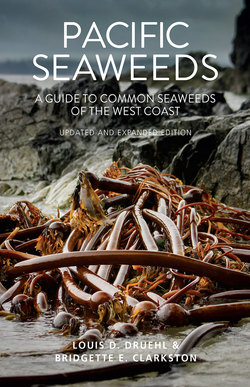Читать книгу Pacific Seaweeds - Louis Druehl - Страница 22
На сайте Литреса книга снята с продажи.
ОглавлениеPacific Seaweeds
22
functions: to cause the explosive release of sperm from the male and to attract the sperm to the egg. Interesting, but of no evolutionary significance, is the observation that similar-smelling substances (gin, lamoxirene) elicit similar responses in humans and kelp.
Subsequent studies have shown that the perfume, lamoxirene, produced by any species of kelp will attract sperm of any other kelp species. This raises the question, if lamoxirene is a universal sexual attractant, what prevents universal hybridization? A study of intergeneric hybridization in kelp indicated hybridization is common. Furthermore, this study suggested that the putative hybrids bore the female parent’s morphology. This unusual genetic expression, where the male’s contribution seems insignificant, is foreign to plants and animals, and may be a unique feature to algae.
The life cycles of most red seaweeds have an added twist. The gametophytes release their sperm but retain their eggs. The eggs are fertilized while attached to the gametophyte and the new sporophyte generation develops parasitically on the gametophyte. This sporophyte produces spores by mitosis (no reduction in chromosome sets). These spores are released and establish a free-living sporophyte generation. The sporophyte undergoes meiosis (reduces the chromosome sets to one) in the production of spores that will give rise to a new gametophyte generation. As with other seaweeds, the red seaweeds may have isomorphic or heteromorphic generations (Figure 8).
The various types of life cycle may convey survival advantages. For example, some red and brown seaweeds have two morphologies, a persistent crust and a short-lived erect bladed (leaf-like) structure. The crust may be less susceptible to grazing or summer drying than the more delicate exposed blade.
Many seaweeds are capable of reproducing outside of their life cycle. This type of reproduction is referred to as asexual reproduction. The simplest form of asexual reproduction is fragmentation, where broken-off bits of plant develop into new individuals. A more sophisticated form of asexual reproduction is spore production. Spores, produced by mitosis, are released, often by the hundreds, and develop into new individuals. All progeny resulting from asexual reproduction are genetically identical (clones). Asexual reproduction is a means of increasing an individual’s dominance in its environment.
